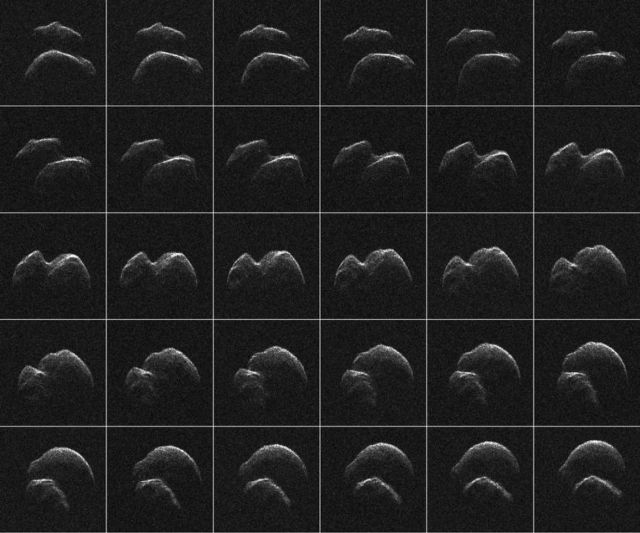Just a day before its closest approach, asteroid 2014 JO25 was imaged by radar with the 70-meter antenna of NASA.
Radar images of asteroid 2014 JO25 were generated and collected on April 18, 2017, by NASA’s Goldstone Solar System Radar in California’s Mojave Desert. Image credit NASA/JPL-Caltech/GSSR
At the time, asteroid 2014 JO25 was 1.9 million miles (3 million kilometers) from Earth. The asteroid safely passed Earth at a distance of 1.1 million miles (1.8 million km) on April 19 at 12:24 UTC.
“The asteroid has a contact binary structure – two lobes connected by a neck-like region,” said Shantanu Naidu, a scientist from NASA’s Jet Propulsion Laboratory in Pasadena, California, who led the Goldstone observations. “The images show flat facets, concavities and angular topography.”
The largest of the asteroid’s two lobes is estimated to be 2,000 feet (620 meters) across.
Radar observations of the asteroid also have been conducted at the National Science Foundation’s Arecibo Observatory in Puerto Rico. Additional radar observations are being conducted at both Goldstone and Arecibo on April 19 20, and 21, and could provide images with even higher resolution.
source NASA






Leave A Comment